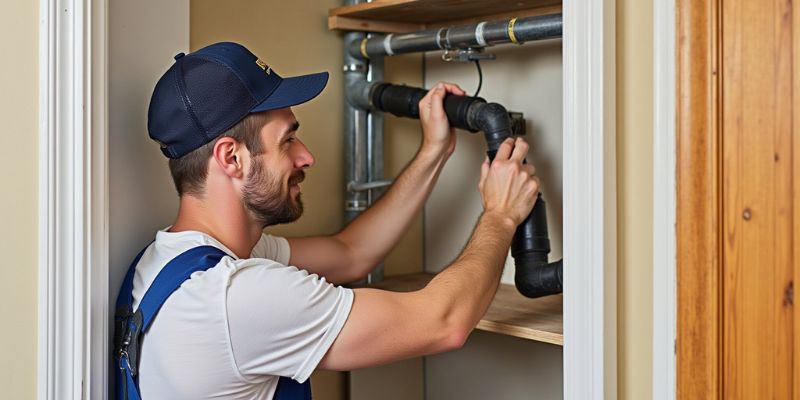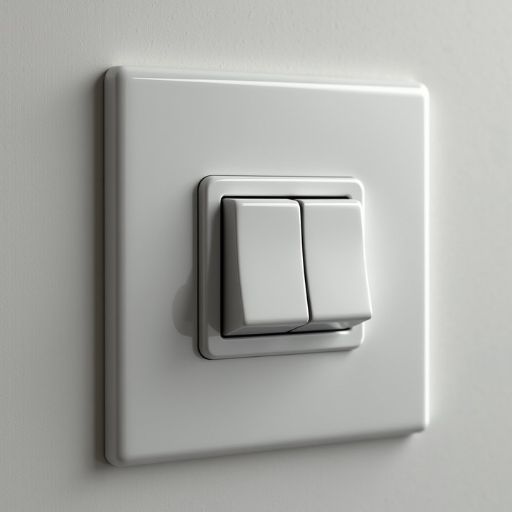Emergency Repairs: Who Pays & How Fast Should They Fix It?
Did you know that landlords are legally required to address emergency repairs swiftly, often within 24 to 72 hours, to avoid potential legal repercussions?
As a tenant, it’s essential that you understand your role in promptly reporting issues and documenting your requests.
While landlords typically cover these costs, unless negligence is proven, knowing the nuances of this responsibility can prevent disputes.
Discover how effective communication and legal protections support a seamless repair process.
70K+ People Bought this $29 game-changer Last Month (The Reviews Are Insane)

Understanding Landlord Responsibilities for Emergency Repairs
When you’re a landlord, understanding your responsibilities for emergency repairs is essential to maintaining a safe and legally compliant property.
You must address emergency repairs promptly, typically within 24 to 72 hours, depending on local laws and the urgency.
These repairs include issues like plumbing leaks, heating failures, or electrical hazards that pose immediate risks to tenant health and safety.
Ignoring these can lead to legal consequences, such as lawsuits or rent withholding by tenants.
To guarantee efficiency, establish a list of trusted vendors ready to tackle emergency repairs.
This proactive approach not only mitigates potential damage but also demonstrates your commitment to tenant well-being.
Tenant Obligations in Reporting and Facilitating Repairs

As a tenant, promptly reporting maintenance issues is essential to prevent further damage and guarantee your landlord can address repairs swiftly.
Use written communication for repair requests to document the issue, safeguarding both parties’ interests.
Additionally, make sure you provide reasonable access to your rental unit for repair personnel, facilitating efficient completion of necessary repairs.
Prompt Reporting Importance
Although it might seem like a minor inconvenience at first, promptly reporting maintenance issues is essential for preventing further damage and guaranteeing timely repairs.
As a tenant, your responsibility to engage in prompt reporting can greatly affect the condition of your living space.
Here’s how you can efficiently handle maintenance issues:
- Written Notice: Always provide written notice of any necessary repairs to create a documented record. This helps in tracking and verifying communication.
- Timely Documentation: Capture photographs and detailed descriptions of issues. This evidence supports your case and accelerates the repair process.
- Safety and Costs: Delays can turn minor problems into major safety hazards, increasing repair costs. Swift action guarantees a safe and cost-effective resolution.
Embrace your role for a seamless living experience!
Access for Repairs
Effective handling of maintenance issues doesn’t stop at prompt reporting; it extends to facilitating the repair process.
As a tenant, you’re responsible for providing access for repairs, an essential step in addressing any maintenance issues efficiently.
Your lease likely outlines the need to allow reasonable access to your unit for landlords or their agents.
This obligation guarantees that repairs are made swiftly, preventing further damage and additional costs.
Clear communication about the nature and urgency of the issue can greatly enhance repair efficiency.
Timely reporting and cooperation in granting access assure that both you and your landlord can resolve problems swiftly, safeguarding your living environment and maintaining your freedom from unnecessary hassles and extended disruptions.
Documenting Communication
To guarantee maintenance issues are resolved swiftly and disputes are minimized, documenting communication is a critical task for tenants.
Promptly report any repairs needed to your landlord, ideally within 24 hours. Written notice provides a formal record, ensuring your concerns are acknowledged.
Here’s how to protect yourself:
- Write and Save: Always document communications regarding repairs in writing, such as emails or letters, and keep a copy for your records.
- Visual Evidence: Photograph the issue to provide clear evidence of the needed repairs, supporting your claims if disputes arise.
- Access Coordination: Facilitate reasonable access for landlords or repair personnel, ensuring they can address the issues without delay.
Distinguishing Between Emergency and Non-Emergency Repairs

When distinguishing between emergency and non-emergency repairs, focus on whether the issue poses an immediate threat to health, safety, or significant property damage.
For example, plumbing leaks or heating failures require urgent attention, while issues like burnt-out lightbulbs can be scheduled during normal business hours.
Identifying Emergency Situations
Determining whether a repair qualifies as an emergency can considerably impact how quickly issues are resolved and who bears the cost.
Understanding the distinction between emergency repairs and non-emergencies is essential for both tenants and landlords.
Here’s how you can identify emergency situations:
- Immediate Health or Safety Risks: Plumbing leaks, heating failures, and electrical malfunctions demand urgent attention, typically within hours, to prevent harm.
- Timely Reporting: Tenants should report true emergencies promptly to avoid further damage, ensuring landlords or property managers can prioritize and address them swiftly.
- Clear Communication: Landlords must clearly communicate what constitutes an emergency repair versus non-emergency issues to set proper expectations and streamline maintenance processes.
Non-Emergency Repair Examples
Non-emergency repairs, often overlooked, play an essential role in maintaining a property’s overall condition and livability.
As a tenant, understanding these repairs—such as burnt-out lightbulbs, minor leaks, or squeaky floors—empowers you to manage your living space efficiently.
Property managers typically handle these non-urgent issues within 30 days, aligning with local laws or lease agreements.
By recognizing these distinctions, you can avoid unnecessary stress and focus on enjoying your home.
When communicating with property managers, clearly describe the problem to guarantee it’s prioritized correctly.
This approach not only streamlines the repair process but also supports a balanced relationship between tenants and property managers.
You’ll find that addressing these repairs promptly contributes greatly to the overall well-being and functionality of your living environment.
Tenant Reporting Guidelines
Understanding the difference between emergency and non-emergency repairs is essential for tenants to secure efficient communication and timely maintenance.
Adhering to tenant reporting guidelines guarantees that urgent issues receive immediate attention, while less critical matters are addressed appropriately.
- Emergency Repairs: Report these instantly. Think plumbing leaks or heating failures—issues that pose safety risks and demand quick landlord action.
- Non-Emergency Repairs: Handle these during regular business hours. Examples include burnt-out lightbulbs or minor cosmetic concerns, which don’t require immediate intervention.
- Effective Communication: Clearly describe the repair issue to your landlord, helping them prioritize and allocate resources effectively.
Document all repair requests with dates and descriptions to support your case if disputes arise regarding repair timeliness or necessity.
This clarity offers you peace of mind and secures your living space remains safe and functional.
Timeline Expectations for Emergency Repair Completion

How quickly should emergency repairs be completed once they arise?
Typically, emergency repairs, like plumbing leaks or heating failures, demand immediate attention.
Landlords must address these vital issues within 3 to 7 days, as local laws might specify exact timelines.
Prioritizing these repairs guarantees tenant safety and compliance with health codes.
Ignoring such urgency can lead to legal consequences, including tenant claims for damages.
As a tenant, promptly report any emergency issues to facilitate quick responses.
This allows landlords to act within the required timelines.
Maintaining documentation of repair requests and communication is essential. .
It helps both parties understand their rights and obligations, guaranteeing everyone involved stays informed and accountable, ultimately preserving your freedom and comfort in your living space.
Financial Responsibilities: Who Covers the Costs?

When emergencies strike, who foots the bill for repairs becomes a pressing question.
Understanding your financial responsibilities can empower you during such situations.
Understanding your financial responsibilities during emergencies empowers you to handle repair costs effectively.
Generally, property owners bear the cost for emergency repairs that guarantee the safety and structural integrity of the home, like plumbing leaks or HVAC issues.
Here’s how you can navigate this:
- Review Your Lease: Lease agreements often outline which party is responsible for specific emergency repairs. Knowing these details upfront is vital.
- Consider Insurance: Landlord insurance policies often cover emergency repair costs, relieving their financial burden.
- Tenant Accountability: You’re typically not liable unless negligence or misuse is involved in the damage.
Legal Protections for Tenants Requesting Repairs

While financial responsibilities are clear, knowing your rights as a tenant also plays an important role in handling emergency repairs.
You’re protected from eviction for six months after requesting necessary repairs, ensuring landlords can’t retaliate for your maintenance requests.
Landlords must address health and safety issues promptly, typically within 3 to 7 days for significant repairs.
It’s essential tenants know that timely rent payments are important because late payments might lead to landlords refusing to make repairs.
Always document your repair requests and report unresolved issues to housing agencies, which can compel landlords to act.
If landlords ignore requests, you have legal remedies, such as withholding rent or pursuing claims in Small Claims Court, ensuring your living conditions are maintained.
Effective Communication Strategies During Repair Processes

Establishing effective communication strategies is essential during repair processes to guarantee timely and efficient resolutions.
As a tenant or landlord, you can promote swift action by following these steps:
- Clear Channels: Establish direct communication channels to report and acknowledge repair needs promptly. This approach facilitates immediate attention and action.
- Documentation: Keep a detailed record of all repair-related communications, including dates and times. This documentation supports both parties in case of disputes or follow-ups.
- Technology Utilization: Leverage property management software to streamline communication and provide real-time updates on repair statuses, enhancing transparency.
Set clear expectations about response times based on repair urgency to manage tenant expectations.
Finally, promote an open dialogue where tenants feel comfortable reporting problems without fear, encouraging timely and honest communication.
Steps to Take if Emergency Repairs Are Delayed

Even with effective communication strategies in place, delays in emergency repairs can occur, requiring tenants to take proactive steps.
Begin by documenting the issue with photographs and written records, noting each interaction with your landlord.
Send a written notice via certified mail, emphasizing the urgency and allowing a seven-day response period.
If the landlord must yet fails to act, consider withholding rent, but check state laws first.
Seek legal recourse by contacting local housing authorities or filing a claim in Small Claims Court for any damages.
In extreme situations, you might terminate the lease if critical repairs are persistently ignored.
However, always consult legal counsel before making such a significant decision.
Resources for Tenants and Landlords on Repair Issues

How do tenants and landlords navigate the often complicated landscape of repair issues?
Start by understanding your rights and responsibilities.
Property owners and renters can find invaluable guidance through dedicated resources. Here’s how you can equip yourself:
- Document Everything: Tenants should photograph repair issues and send written notices to property owners via certified mail to maintain a clear record.
- Know Your Legal Obligations: Landlords must address emergency repairs swiftly—typically within 3-7 days, according to local laws.
- Utilize Available Resources: Websites like TurboTenant provide detailed insights into legal rights and obligations related to repair issues.
Tenants can report unresolved repair issues to housing agencies if landlords don’t comply.
Both parties benefit from distinguishing between critical and non-critical repairs, ensuring timely maintenance and legal compliance.
FAQs
How Long Should Emergency Maintenance Take?
You should expect emergency maintenance to address issues within 3 to 24 hours. Guarantee repair prioritization by documenting your request promptly. An efficient emergency response safeguards your comfort and rights, reflecting a commitment to tenant freedom and safety.
What Is a Reasonable Repair Time?
Did you know 45% of tenants expect repairs within a week? Reasonable repair timeframes depend on the issue’s severity and local laws. Align tenant expectations with clear communication, ensuring compliance with regulations to maintain freedom and satisfaction.
How Long Does a Landlord Have to Fix Emergency Repairs?
You have tenant rights ensuring landlords address emergency repairs promptly, typically within 3 to 7 days. Repair responsibilities fall on landlords, and you should report issues immediately to facilitate swift action and maintain your living conditions.
How Do You Pay for Emergency Repairs?
You can pay for emergency repairs by utilizing insurance coverage to offset repair costs. Check your policy details. Cover initial expenses if necessary, then file a claim for reimbursement. Confirm lease agreements clarify responsibilities to avoid unexpected charges.
Final Thoughts
In emergency repair situations, swift action is essential.
Envision this: a tenant discovers a burst pipe flooding their kitchen.
They promptly report it, and the landlord arranges repairs within 24 hours, preventing further damage.
This scenario underscores the importance of immediate reporting and prompt landlord response to avoid costly consequences.
Always document communication and know your rights, ensuring repairs are handled efficiently.
With clear responsibilities and proactive communication, you can resolve emergencies effectively, safeguarding both property and tenant well-being.